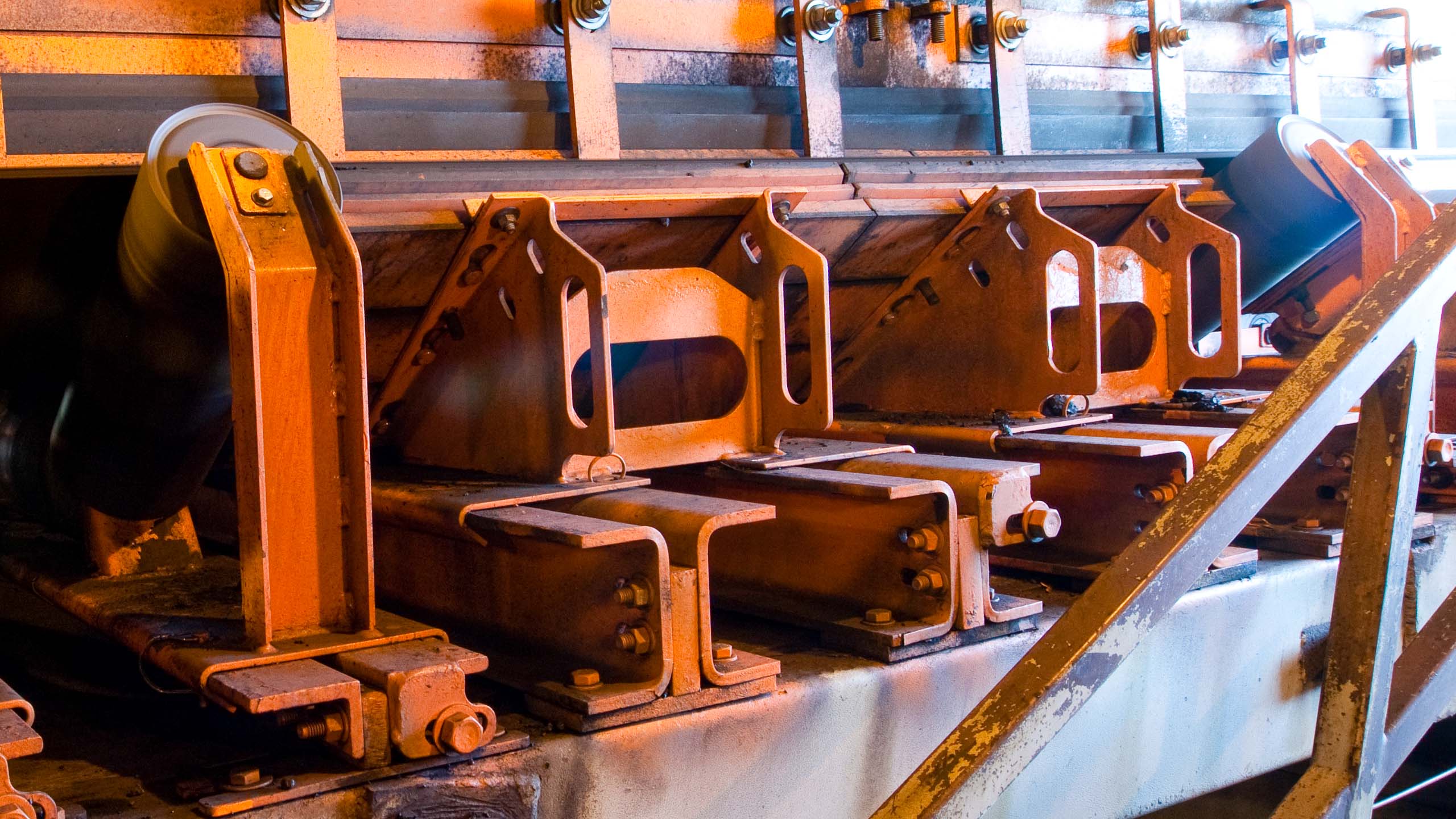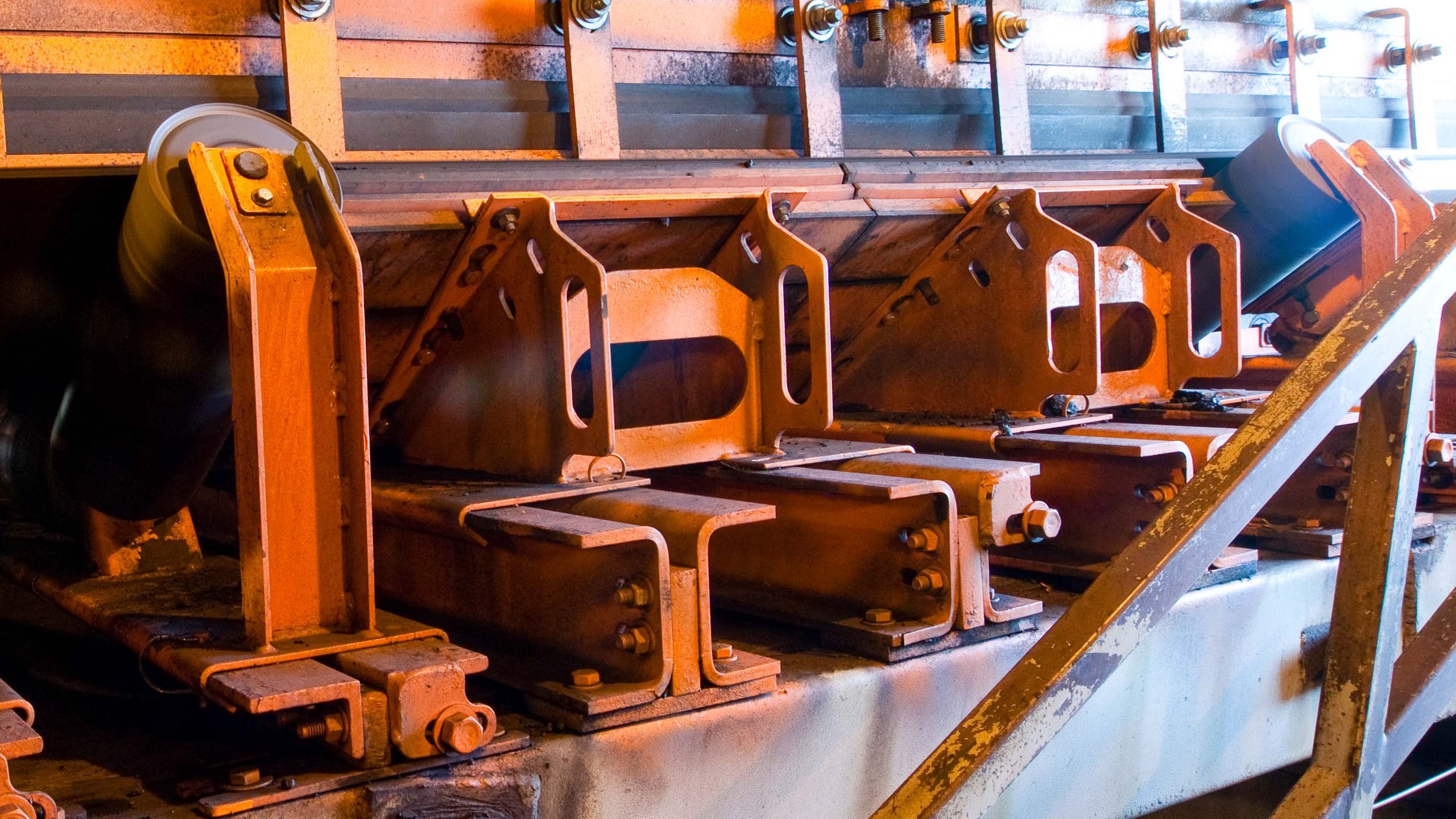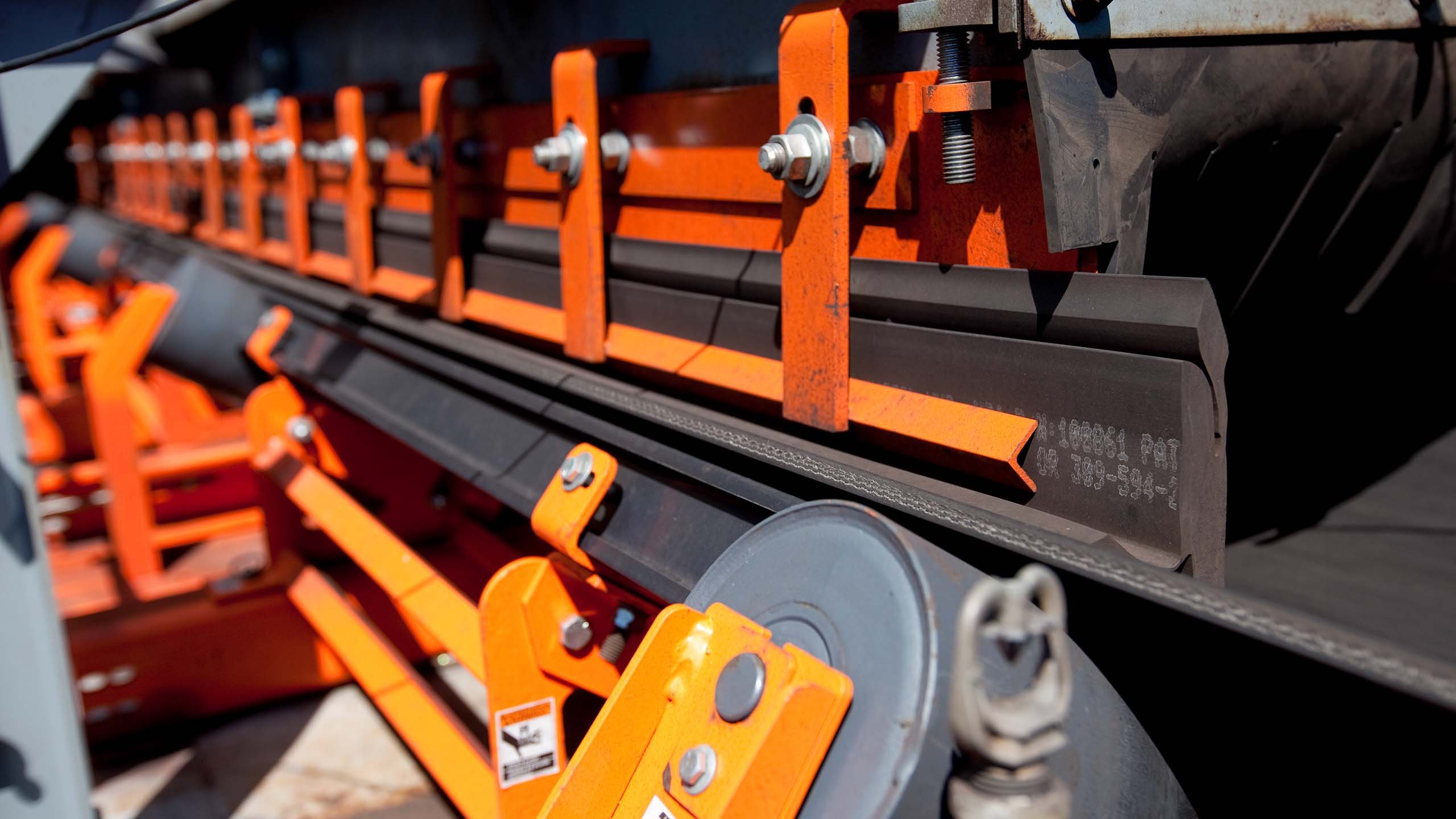Transfer points are a common source of material leakage and damage to conveyor systems in general, but some of the most significant problems are caused by serious impacts from heavy objects or material with sharp edges.
Sometimes these major impacts are the result of long drops through the transfer chute, while in other circumstance the problem systems from the size and characteristics of the materials themselves – whether simply large lumps, boulders, timber or scrap metal.
Long falls can produce significant damage from the force of materials impacting the belt.
In either case, sizable impacts will damage components like idlers and sealing strips. Impact can also create a “ripple” effect on the belt, de-stabilizing its line of travel and increasing the spillage of material. Over time, these impacts can damage the top cover and the carcass of the belt, creating a host of problems elsewhere down the line. Consequently, system engineers do a variety of things to reduce impact levels in loading zones, including the inclusion of engineered chutes, rock boxes, or designs that load fines before lumps.
In many instances, it is not possible to eliminate the risk of impact damage in a transfer belt and designers must incorporate a system to absorb the energy from falling materials into the loading zone.
As an example of the principle, striking a belt that has been laid out on a concrete floor with an ax or hammer will likely split or at least damage the belt. Repeating the process with a belt laid on top of a layer of foam, the damage should be dramatically reduced. Impact cradles serve the function of the foam in an actual conveyor system.
Impact cradles should be installed directly under the material-drop zone to bear the brunt of the shock of the material hitting the belt as it loads. Like edge-sealing supports, impact cradles use low-friction bars underlying the belt to allow easy movement by the belt. However, these cradles make use of elastomeric materials that also feature one or more sponge-like layers that can help absorb the impact of falling materials.
There are two primary arrangements for impact cradles: long bars running parallel to the direction of belt travel and shorter modular bars arrayed perpendicular to the direction of movement in a sort of saddle. The longer bars are usually around 1.2 meters (4 feet) in length, while the shorter bars are generally around 300 millimeters (12 inches) in width. In either case, the number of bars required depends on the width of the conveyor belt, while the number of cradles or saddles is determined by the length of the impact zone, though not necessarily the transfer point.
Some designs feature separate layers for reducing friction and absorbing impact that are permanently attached, while others require these two to be installed separately. Impact cradles are available in a track-mounted design, which simplifies replacement of bars when required.
The limit to the amount of impact that can be absorbed by the belt in combination with an impact cradle is based on the belt’s ability to resist crushing energy. Conveyor systems dealing with particularly strong impacts or damaging materials can mount the impact cradle itself on further shock-absorbing structures, such as spring or air cushions. However, these systems necessarily increase the flexibility of the belt, making sealing the edges of the system significantly more difficult.





















Leave Comment